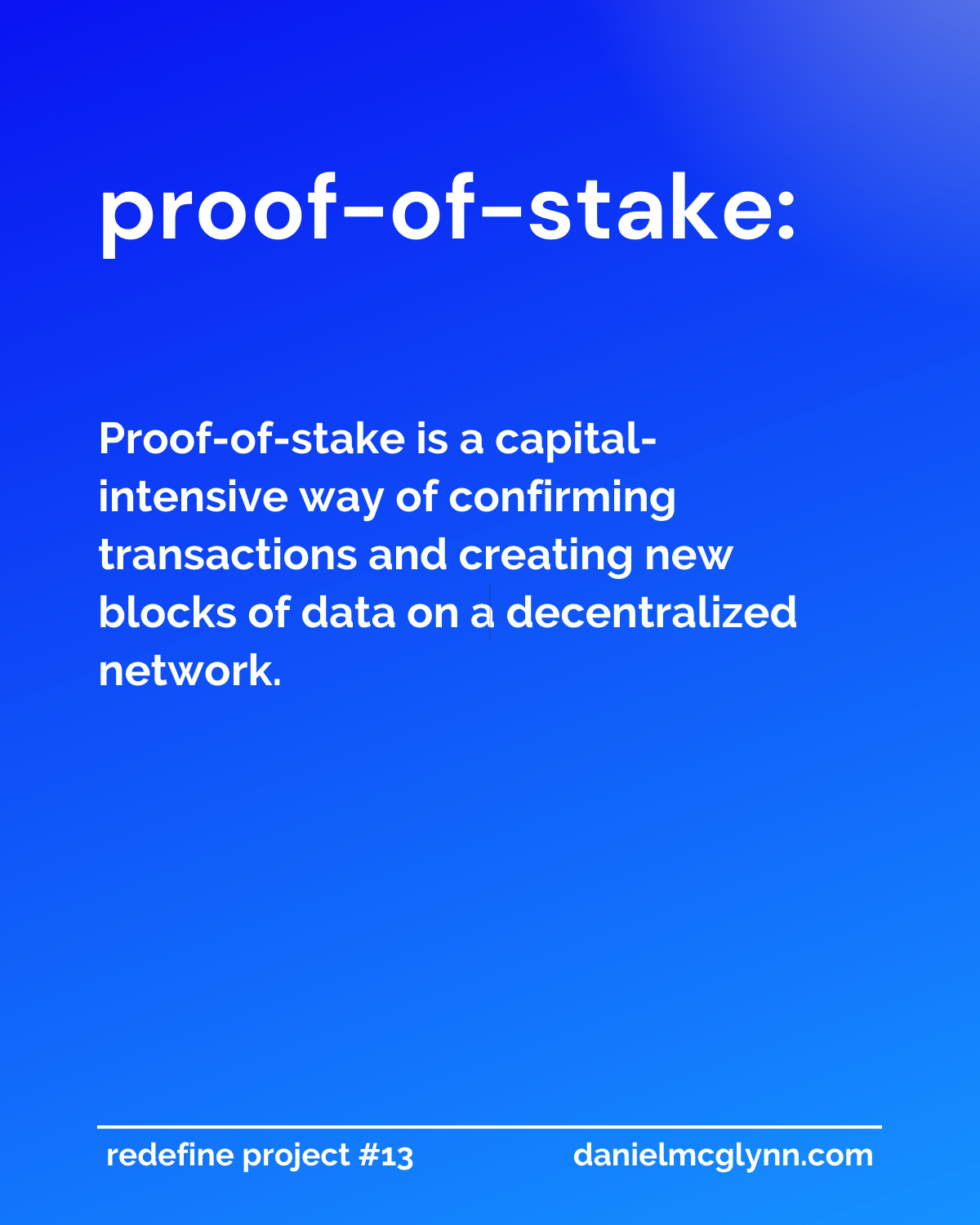Proof of stake is one way of finding agreement and maintaining an open record book without the need for the complexity, expense, or exposure of a middleman to act like an auditor or gatekeeper.
Proof-of-stake is an alternative to proof-of-work — and they are both consensus mechanisms for decentralized networks.
There are other ways of creating consensus, but so far proof-of-work and proof-of-stake are the biggest in terms of operational scale. The Bitcoin network is based on proof-of-work, while the Ethereum network is based on proof-of-stake.

Bitcoin’s proof of work and its derivatives use intensive computation to arrive at a consensus and maintain the network. Proof-of-stake, on the other hand, uses financial capital as a means of designating validator nodes to create new blocks of confirmed transactions, which are then added to the blockchain.
How proof-of-stake works
To participate in proof-of-stake, a “staker” (which can be an individual or a collective) first needs to be able to dedicate a minimum amount of currency native to the underlying staked blockchain. For example, to run a staking node on Ethereum requires a minimum of 32 ETH.
When staking, capital is “locked” and can not be immediately withdrawn. Put another way, the capital is put at risk by its owner during the staking process. The risk of losing the capital if the validator does a poor job of confirming transactions is one of the reasons why the system works.
Losing capital in proof-of-stake is called “slashing,” and can happen if a validator node behaves against the rules of the network or attempts to confirm bad transactions (which could potentially signal a network attack).
Proof-of-stake validator nodes provide two main functions:
- They sign transactions as a way to confirm the details on the blockchain
- Once there are enough confirmed transactions, a validator node is chosen by the network to create a new block, recording the transaction details on the blockchain.
In terms of the first step, once a transaction is initiated on the network, then the sending address, the receiving address, and the amount of the transaction details will be broadcast to the network. Each transaction will be signed by multiple validator nodes (essentially confirming the details are correct) before it gets added to a new block.
When it's time to create a new block and add it to the blockchain, a validator node will be chosen by the network at random. While the process is randomized (using a method called coin tossing), validators with more assets locked have a greater chance at getting chosen to create a new block.
If a validator is chosen to create the next block of confirmed transactions then that node will earn a staking reward, which varies from network to network and can also vary based on network use and demand.
Why proof-of-stake?
Proof-of-stake provides a viable alternative to the dominant proof-of-work consensus mechanism.
A few points key points:
- Energy consumption — This is a big factor for a lot of people. Because it is based on intensive computation, proof-of-work uses a lot of energy. Proof-of-stake, on the other hand, uses way less energy to manage the network.
- Centralization — This is another big point of debate. There is a concern that there is a concentration of only a handful of validator nodes, and some of those nodes are more powerful than others, leading to a worry that power will be concentrated in the hands of a few decision-makers, which runs counter to the basic ideas of decentralization.
To recap, proof-of-stake is one kind of consensus mechanism used by decentralized networks. It has advantages of being more energy efficient than alternative forms of consensus, and it works at scale as proven by the Ethereum network.
One concern is a concentration of staking power could lead to a form of centralization.